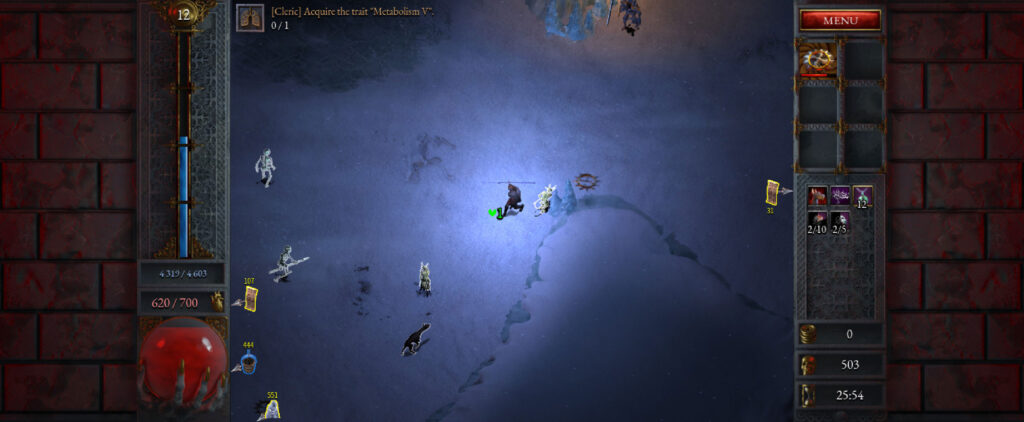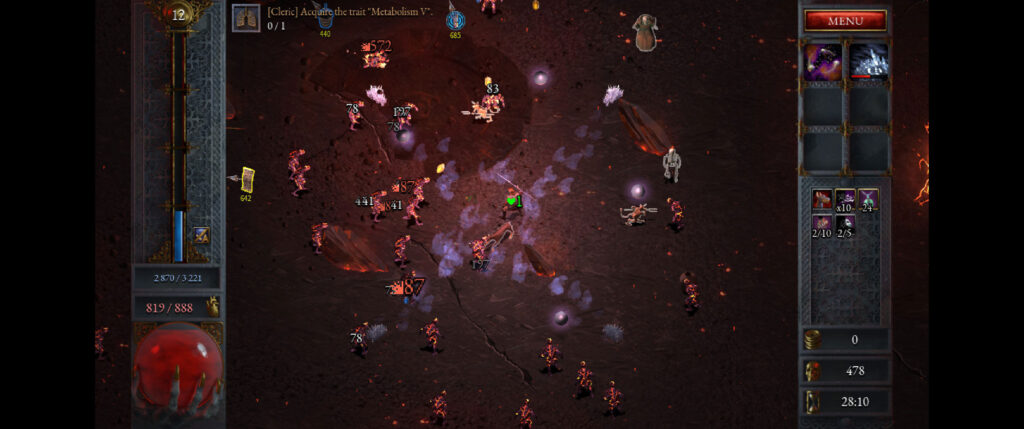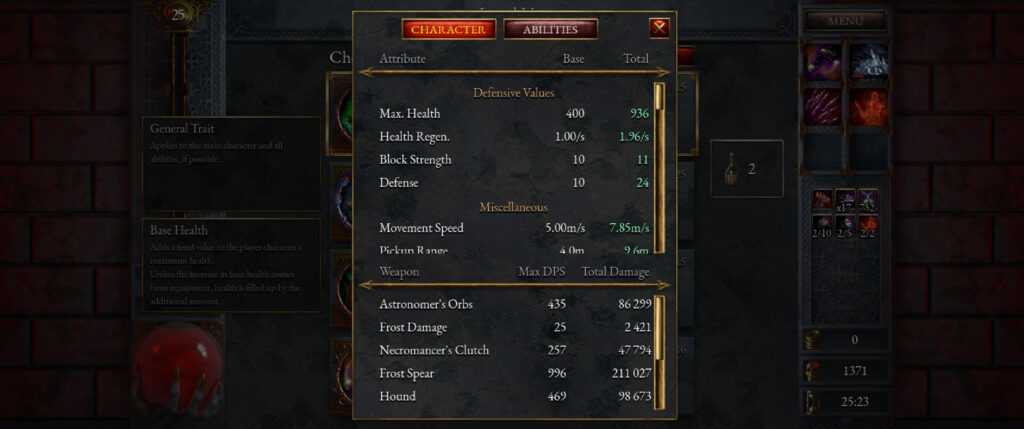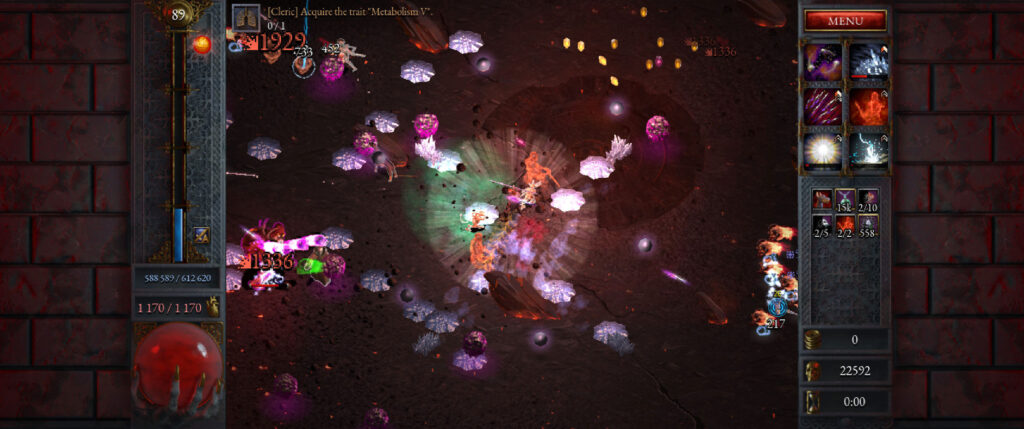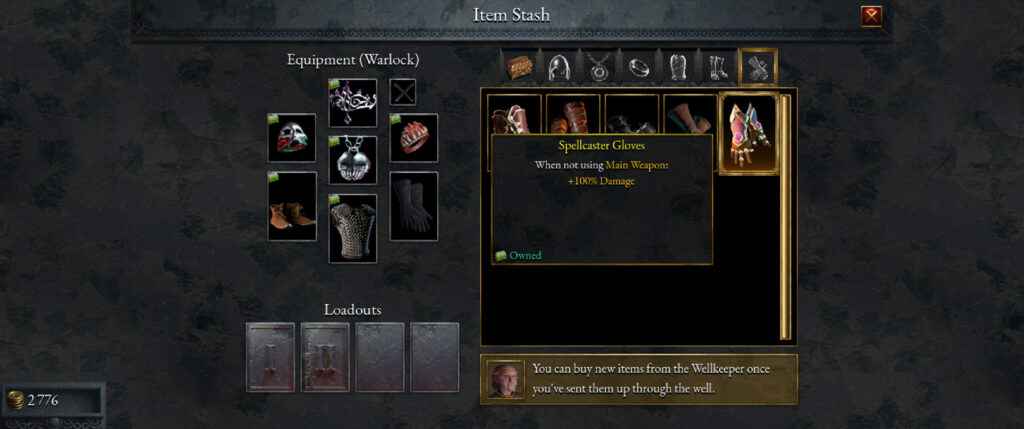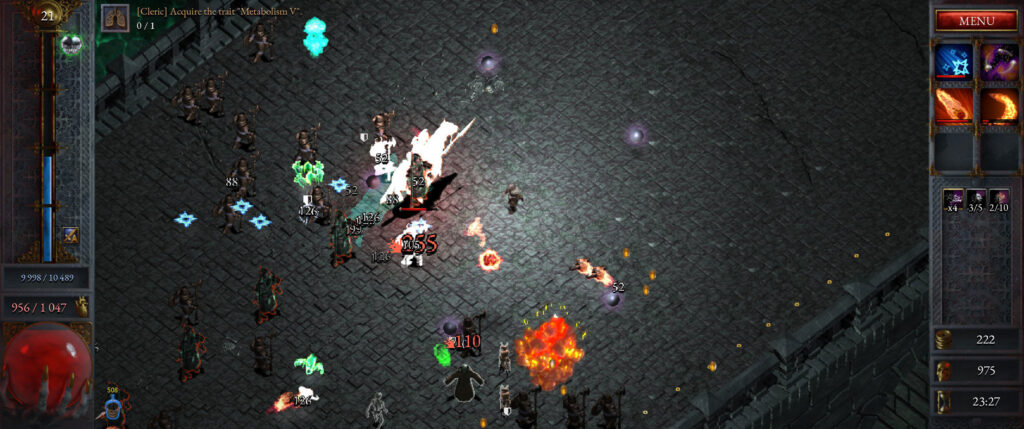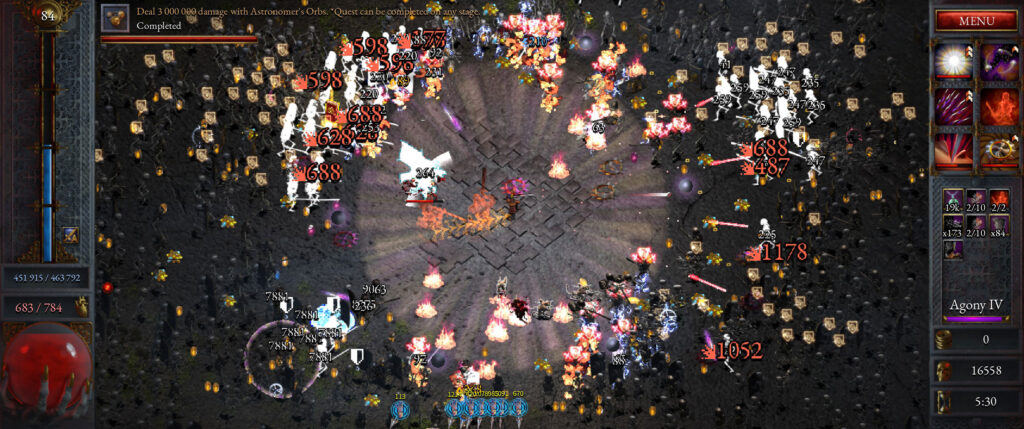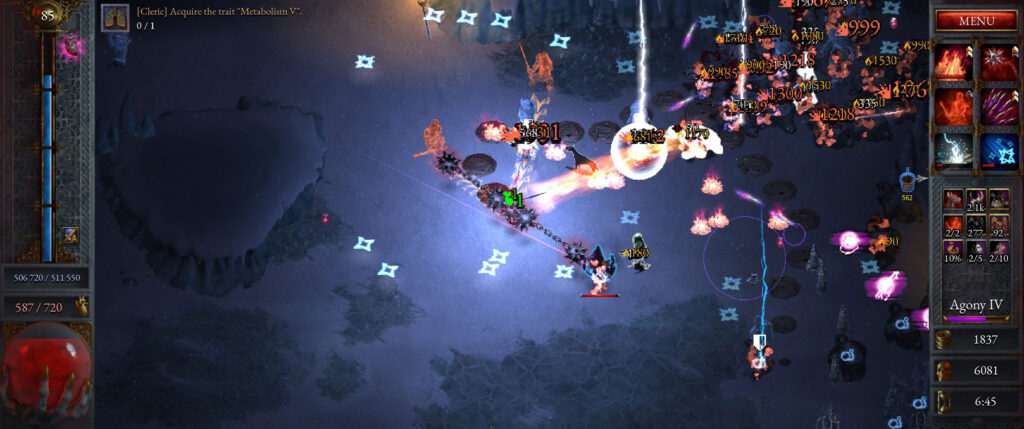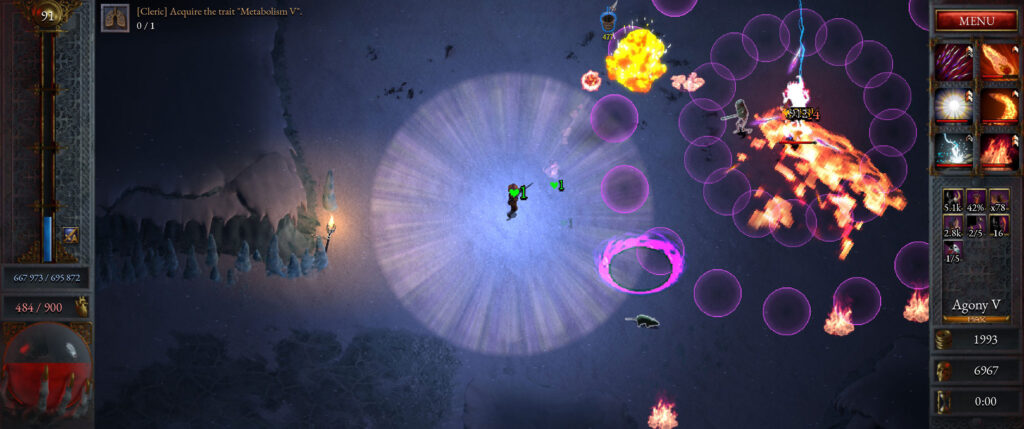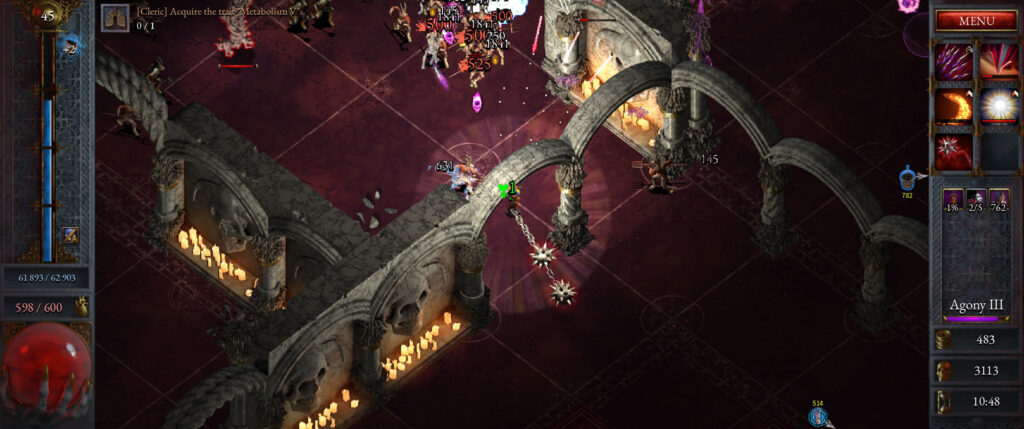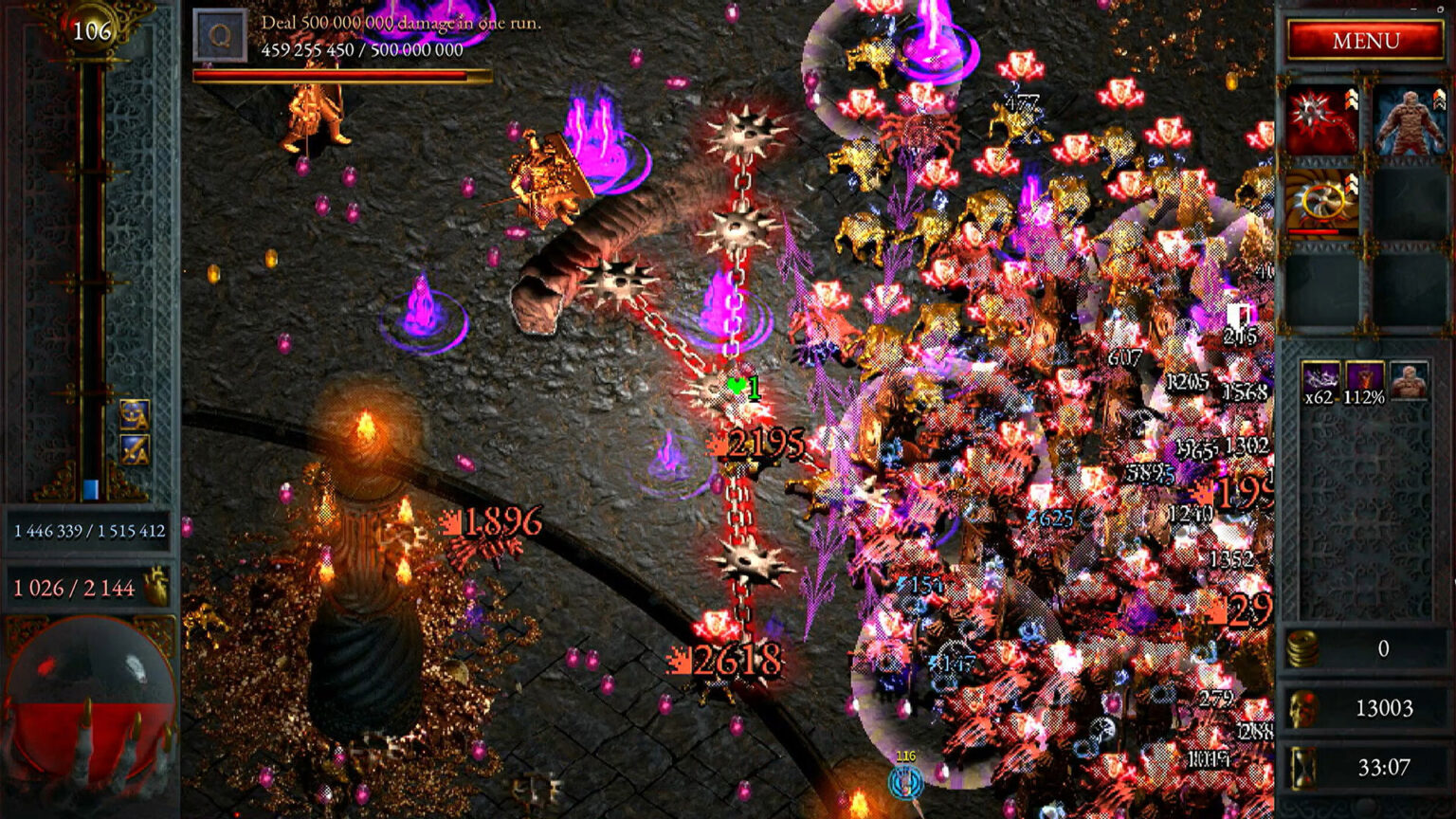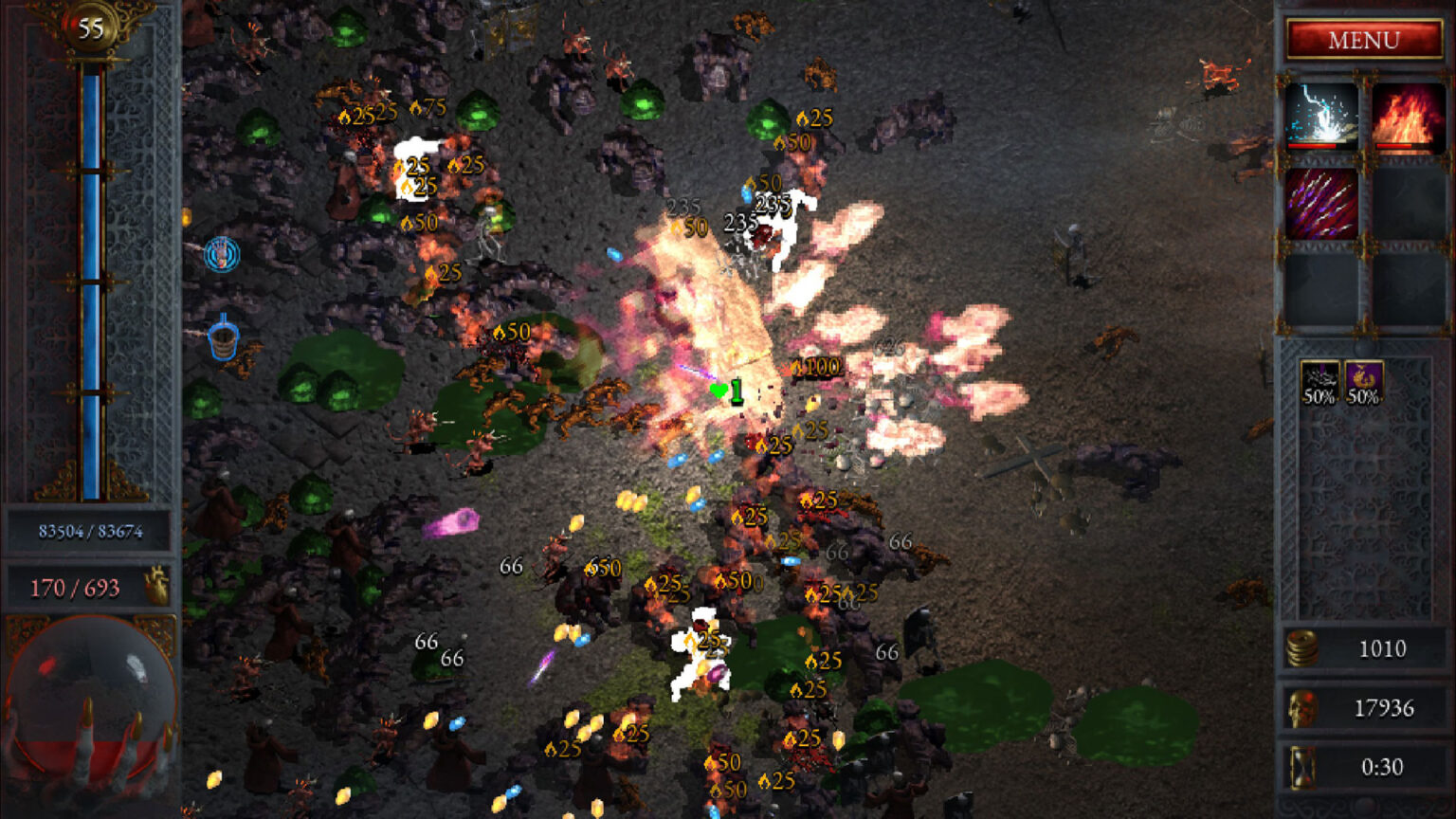Quick Verdict
Exiting Early Access 16 months after its debut, Halls of Torment is an excellent addition to the ever-growing survivor-like genre. Featuring a retro-inspired aesthetic reminiscent of 1990s action RPGs, Halls of Torment adds to the formula with armored gear slots familiar to any Diablo player. It’s a fantastic pick-up-and-play title, especially if you have a Steam Deck, and is a great entry point to the genre if you haven’t tried any other survivor-like games.
Having played nearly a dozen survivor-like titles for over a hundred hours combined, Halls of Torment continues to be my favorite. This is especially true with all the additions developer Chasing Carrots included in the game’s 1.0 release, delivering significant replayability and unlocks for its price point.
Swarmageddon
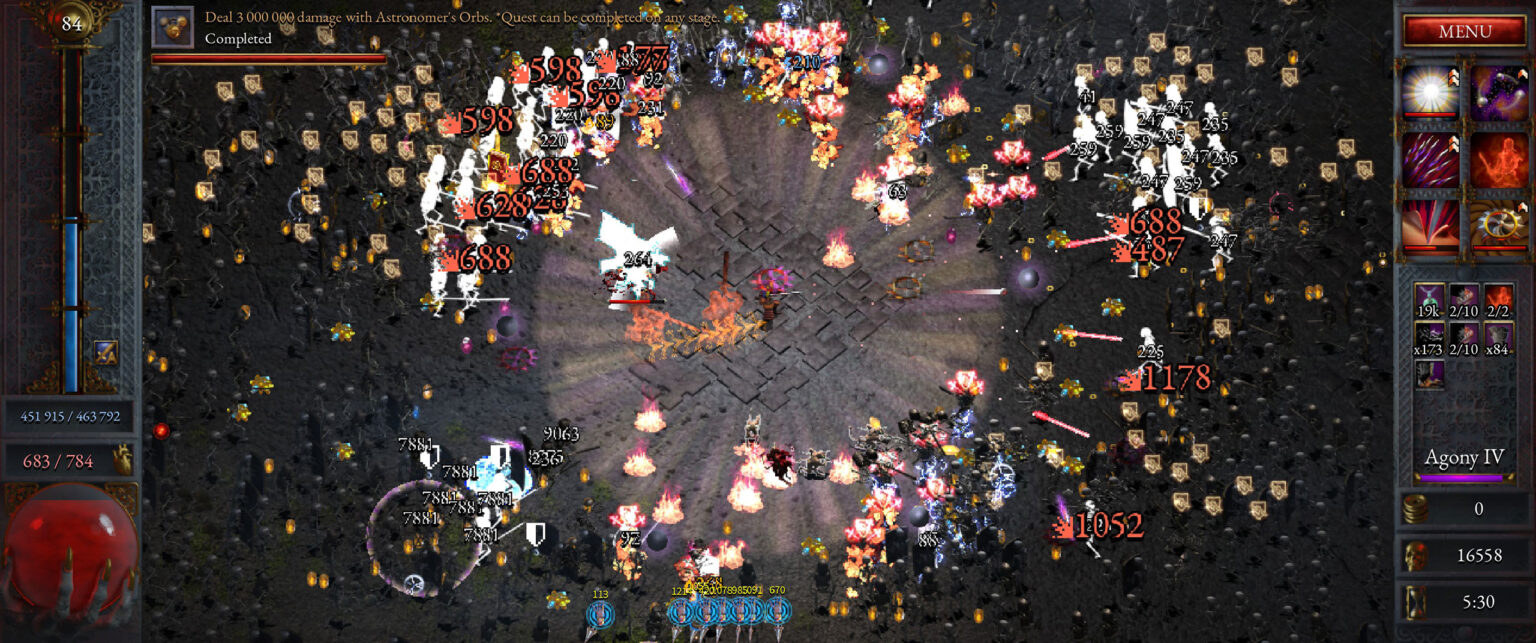
If you’ve never played a survivor-like game, it’s almost hard to understand the appeal if you’re simply reading a review. Halls of Torment’s gameplay is very simplistic, even more so than the 1990s action RPGs it draws inspiration from for its visuals. If you wanted, you could reduce the gameplay to simply controlling your character, allowing the game to automatically attack and aim via the settings. Assuming you want full control, you’re basically walking around a repeating map and clicking to attack mobs just as you would in a game like Diablo. Unlike an actual action RPG, Halls of Torment has no additional buttons to press, meaning you don’t have control over any skills. Instead, those are automatically cast as they’re off cooldown. This means the main strategic component in Halls of Torment is how you build your character, rather than how you play it. The biggest decision while navigating the map is which direction to go to avoid mobs and boss mechanics.
Initially, each map has a 30-minute timer before the final boss spawns. Throughout that session, your goal is to kill as many enemies as you can, earning experience and leveling to unlock and upgrade traits. Each map starts with two scrolls you can pick up to unlock skills, ranging from giant fireballs slamming into the ground to blades whirling around your character. Each run allows you to select up to six abilities, as scrolls will drop as you kill champions and mini-bosses during the run. Those 72 abilities and upgrades (combined) are complemented by over 100 items, which also drop from champions and mini-bosses and can be equipped for additional bonuses. When you pick up an item, you can take it to the well to retrieve it as a permanent unlock, allowing you to equip it at the start of a future run. It’s a fantastic mechanic to add more depth and character customization to your playthroughs, and it also opens up a variety of builds you can do with the 11 different playable characters. To start, you’ll be limited to retrieving one unique item per run, but later on in Agony Mode, there are random drops for additional retrievals.
Crafting Chaos
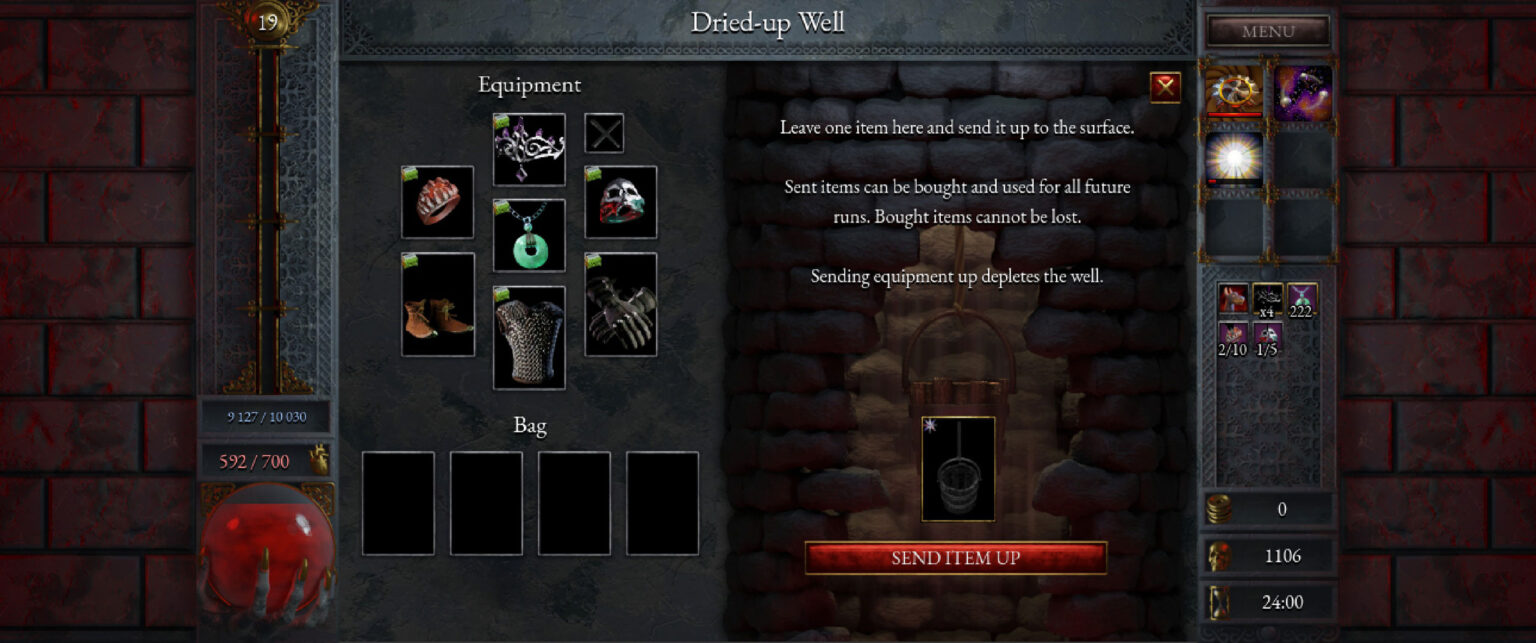
If you grew up playing the original Diablo, you’ll uncover a lot of nostalgia buried in Halls of Torment. The aesthetics and dungeon design are very reminiscent of what Blizzard North managed to create with such limited resources at the time. As I mentioned in my Halls of Torment first impressions feature, one of the standout features of the game is the end-of-level boss fights with mechanics that keep you on your toes. You’ll have to dodge projectiles and dashing attacks, no matter how strong your build is, which helps make traits like movement speed and health regeneration valuable. In total, there are over 900 traits that upgrade characters and abilities, although many are just subsequent tiers—up to five—of existing ones. The choices aren’t that overwhelming, but just enough to give you build variety for each run. You can get pretty creative too, as one Agony Mode completion I decided to build a character with as much movement speed as possible, sacrificing a lot of damage to do so. The result? It took me over 20 minutes to kill the final boss, and I was almost 30 levels below my usual level because I wasn’t able to kill anything. Nothing could kill me either, because I was able to outrun the mechanics and enemies.
This is where Halls of Torment really shines compared to other entries in the genre. In other games, I often felt like I messed up my build by choosing the wrong upgrade, but in Halls of Torment, it seems like you can always make something work. Of course, this is only true once you understand the game’s systems, but for the most part, it’s a lot more accessible than others. Some could say it’s because the traits are rather basic, but I’d argue the entire premise of a survivor-like is basic. When designing a game, it’s difficult to balance complexity with player choices, and I have to applaud the team at Chasing Carrots for seemingly finding the sweet spot.
Vintage Vengeance
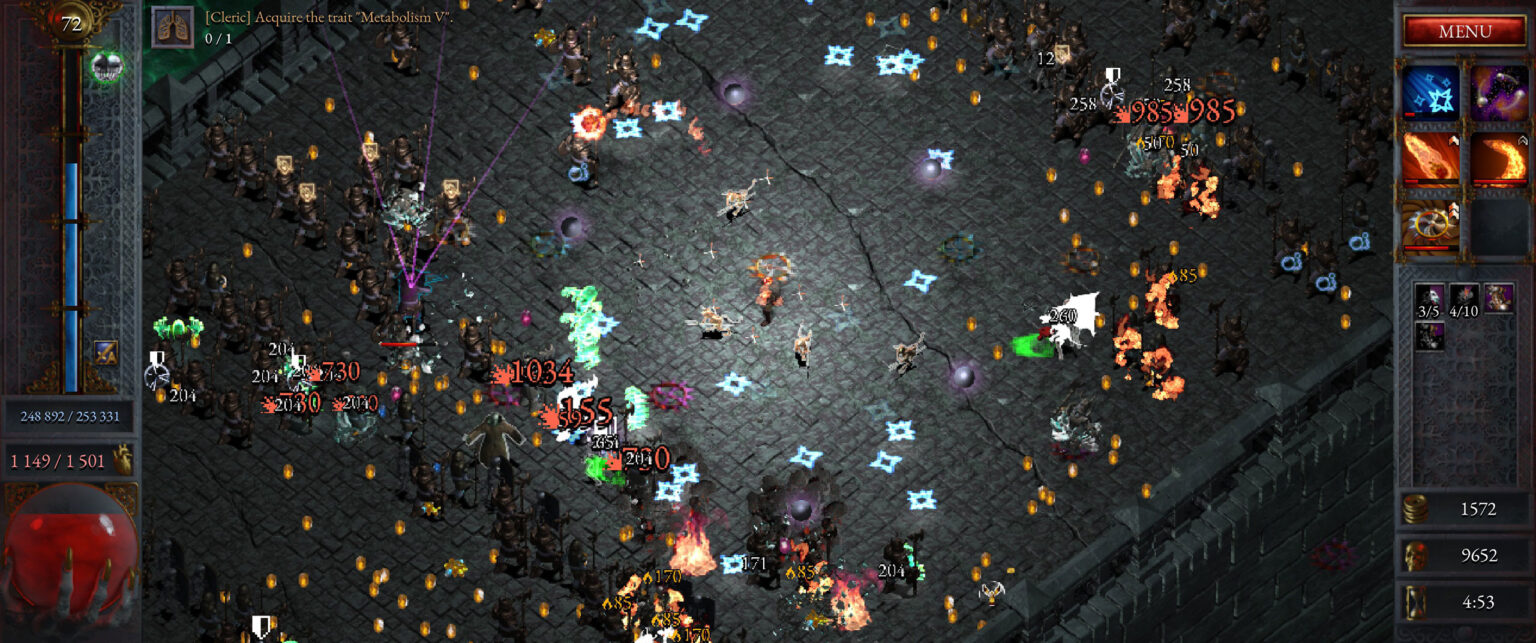
The nature of these games means there will be a certain point when there’s a lot happening on the screen. You’ll have dozens, if not hundreds, of enemies swarming you, along with numerous effects from your six abilities. Halls of Torment does a pretty good job keeping things clear, using a pink/purple shade for enemy attacks to clearly define what you need to avoid. Things can still get a bit confusing, but I never felt like I died due to inadequate warning from the game. The screen also notifies you with a clear distanced indicator when there’s a key item to be picked up, including health potions. This is particularly helpful if you’re desperately trying to stay alive for the boss to spawn, where your priority becomes seeking out health potions instead of killing what’s directly in front of you.
In my 50 or so hours of playtime, I spent around half of that on my Steam Deck. The only real bug I encountered in the 1.0 version was a visual bug, likely caused by playing on an ultra-widescreen monitor—Chasing Carrots even warned about this in the patch notes. On the Steam Deck, performance can drop in the final few minutes of a map. I never noticed my FPS dropping below 30, but there’s definitely an impact when there’s a lot going on. Still, it’s one of my favorite games to play on the Steam Deck.
Retro Run of Ruin
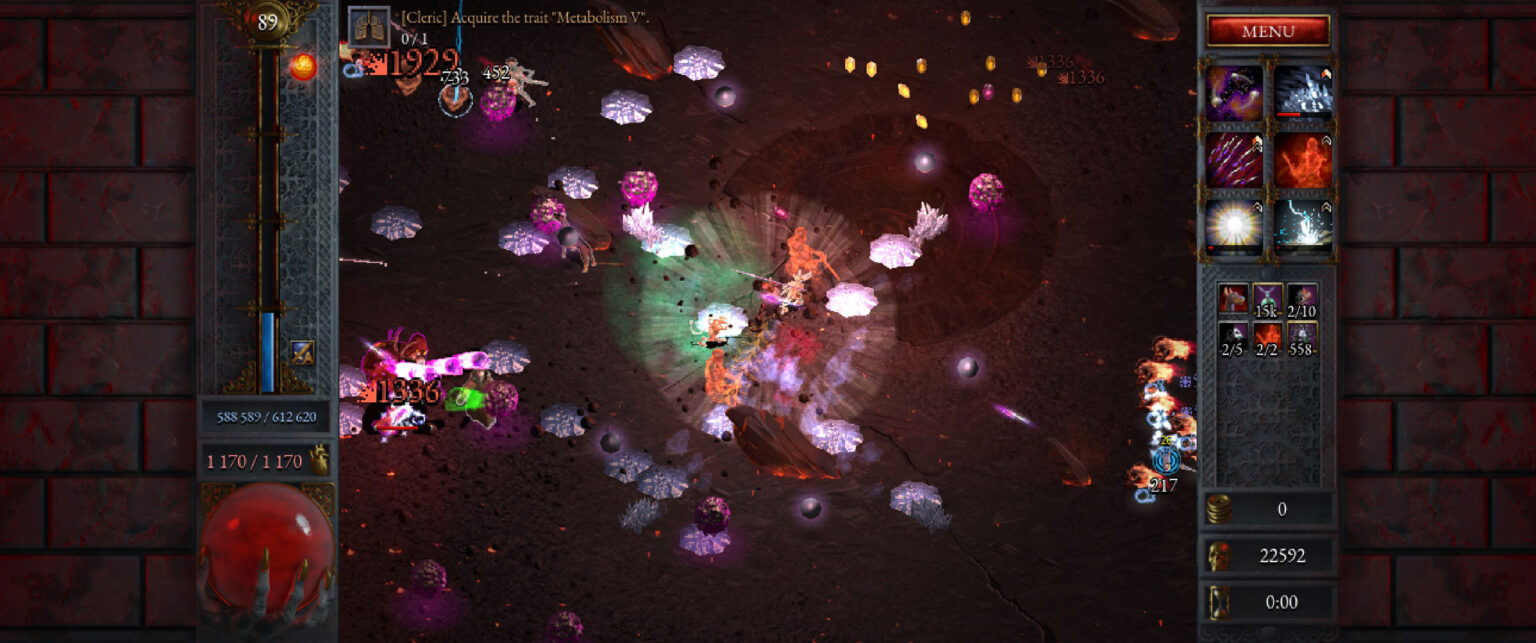
I found all the additions in the 1.0 release to be welcome, with a fleshed-out Agony Mode within the Shrine of Torment that offers a new way to customize each run. There are 30 artifacts that can be collected, which add various effects, including one that shortens the runtime to 20 minutes. All the artifacts I’ve uncovered so far make the run more difficult, but some have clever side effects that I won’t spoil. It’s a solid endgame progression mode for those seeking a bigger challenge, complemented by more powerful gear pieces. There is also the Scriptor, who unlocks the ability to improve individual character stats.
If you’re an achievement hunter, Halls of Torment has 500 quests to clear. Many of these will happen naturally as you play the game, such as dealing millions of damage with a particular ability or reaching a certain level trait with a specific character. It’s almost overwhelming if you look at the list, but I found it more enjoyable to just unlock them organically instead of focusing on specific ones. If you initially played the game in Early Access, you probably don’t need much convincing to hop back into the final release. If you haven’t touched the game in over a year, you’ll find a lot of new additions that will keep you busy for hours, assuming you enjoy the gameplay loop.
Hell’s Heroes
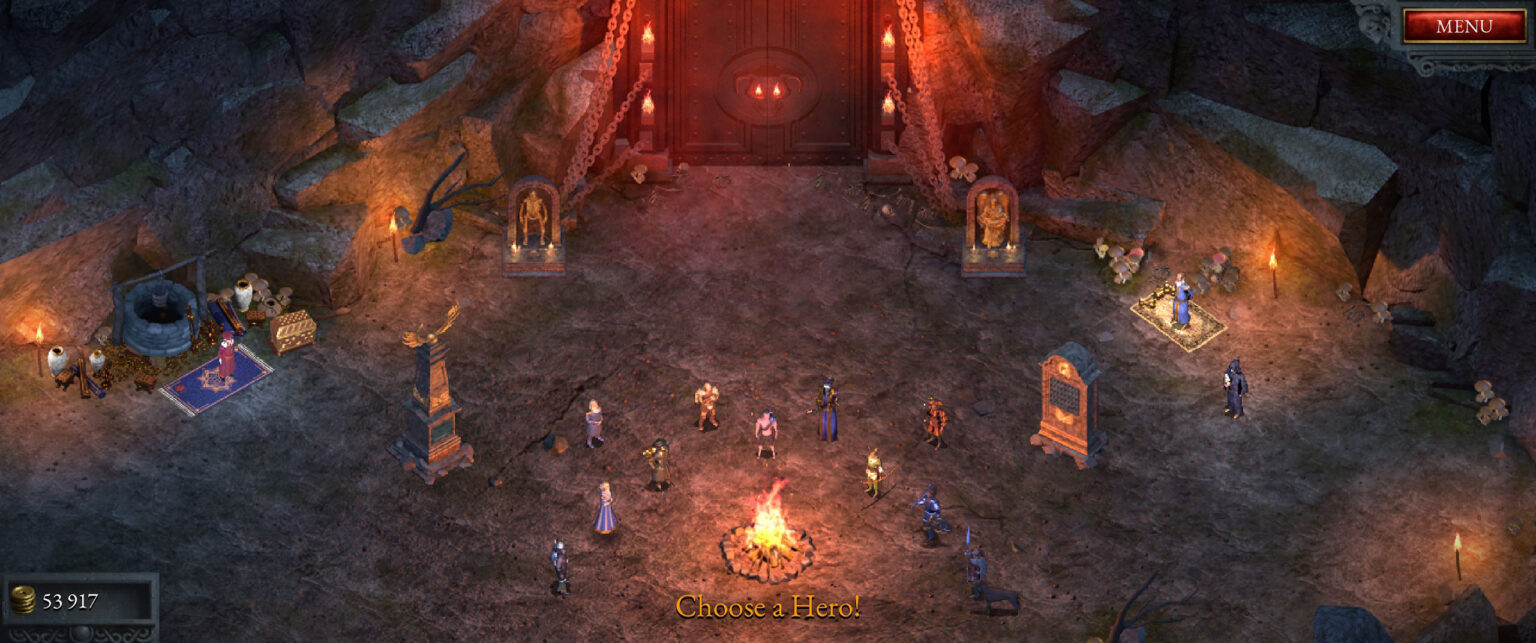
Although Halls of Torment is my favorite of all the survivor-like games, I do wish there was a bit more variety with the gear. There are many new pieces to unlock in the more difficult Agony Mode, but they’re just more powerful variants of existing items. Additionally, some of the characters feel a bit too similar for my liking, although the underlying mechanics of them justify different builds. These are really nitpicks for an excellent game, but they are worth calling out. If you’re a player looking for a survivor-like with extremely deep and complex systems, Halls of Torment may not scratch that itch for you.
Now, it’s really difficult to talk about Halls of Torment without bringing up Vampire Survivors. Vampire Survivors arguably made an entirely new genre popular, even if the core idea isn’t completely original. The best analogy I can offer is choosing between two of your favorite foods. Sometimes you’re in the mood for pizza, and sometimes you’re in the mood for wings. For some people, they have a clear favorite when it comes to the two, but for others, it’s all dependent on what they’re craving. Halls of Torment and Vampire Survivors are a bit like this—sometimes you’re in the mood for what one game has to offer, and other times you’re in the mood for the alternative. It’s no wonder pizza and wings are often ordered together—at the price points for both these games, you’re doing yourself a favor by owning both.
To learn more about Halls of Torment, read our interview with its developers, Chasing Carrots.
Halls of Torment official release date is September 24, 2024 on PC. This review is based on a purchased retail copy of the game on PC, with advanced access to the 1.0 release version from developer Chasing Carrots. While FullCleared does have affiliate partnerships, they do not influence our editorial content. We may, however, earn commissions for products purchased via affiliate links.


